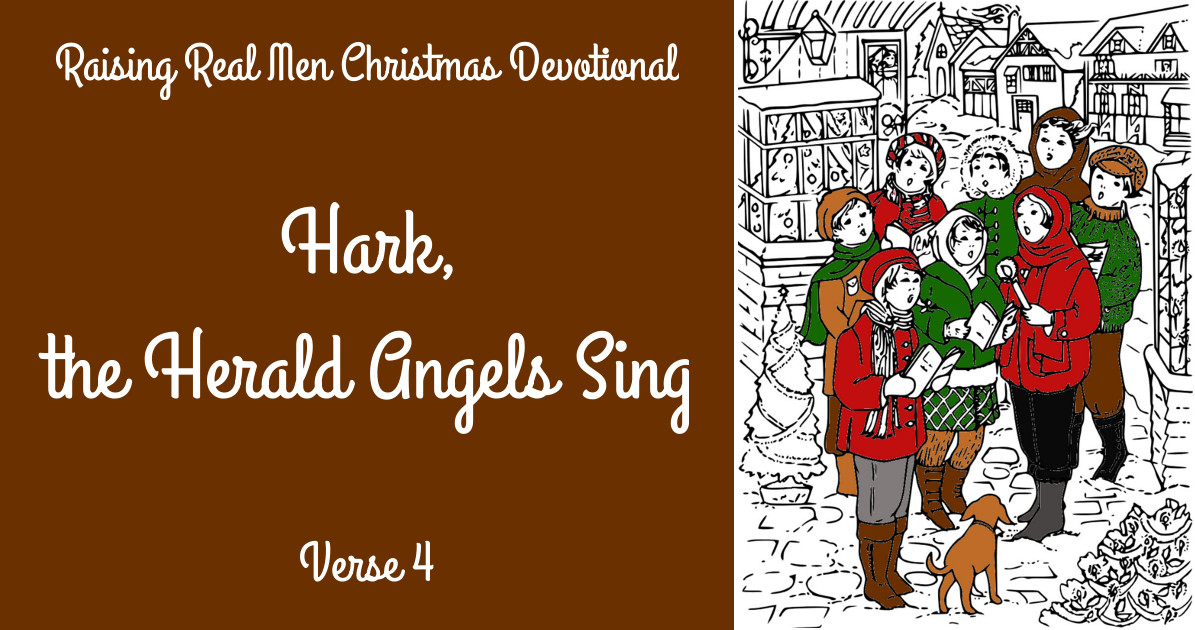HOTW: Second Adam from Above
Welcome to the last post in our series on Hark the Herald Angels Sing. If this is the first one you’ve seen, you may want to begin with our Introduction.
The Garden of Eden, Jan Brueghel the Elder, 1615
Come, Desire of nations, come,
Fix in us Thy humble home;
Rise, the woman’s conqu’ring Seed,
Bruise in us the serpent’s head.
Adam’s likeness, Lord, efface,
Stamp Thine image in its place:
Second Adam from above,
Reinstate us in Thy love.
The fourth verse and last verse that we sing uses the first four lines of the last two original verses, but it works together incredibly well. This verse addresses the protoevangelium. That’s a very big word, but it just means the early or first gospel, when our dear Father gave Adam and Eve hope for the Savior to come in Genesis 3:15. Speaking to the serpent, Satan, He said,
“And I will put enmity Between you and the woman, And between your seed and her Seed; He shall bruise your head, And you shall bruise His heel.”
“Rise, the woman’s conquering Seed,” the carol tell us. It was now time for the Savior who was promised at the beginning of the world to come and restore our nature which was ruined in the Fall. His coming and dying paid the penalty for the sins of God’s people so that they could be reconciled to God. And He is coming for all of His people, more than just the children of Abraham — Haggai 2:7 tells us the Gentile nations will come to Him as well. He is what they are longing for; He is the Desire of Nations.
The last part of the verse teaches us about Christ as the second Adam. I Corinthians 15:22 teaches us about this beginning with, “For as in Adam all die, even so in Christ all shall be made alive.” and don’t miss Romans 5:12-19 and especially, “For as by one man’s disobedience many were made sinners, so also by one Man’s obedience many will be made righteous.” Another reference to the Lord as the second Adam is in I Corinthians 15: 45, “And so it is written, “The first man Adam became a living being.” The last Adam became a life-giving spirit.” Efface means to wipe out, and Colossians 3:8-10 explains that we have to put off the old man and put on the new. Romans 8:29 says that we should be conformed to the image of Christ, which is why the hymn says “stamp Thine image in its place.”
This last verse reminds us that the Lord Jesus Christ’s birth (and death) is the culmination of thousands of years of prophecies beginning in the Garden of Eden. There is incredible theological and devotional richness in this Christmas hymn and we’ve enjoyed studying it again with our children this week. Was it a help to you? We’re working on a curriculum to help teach the hymns of the faith to our children, not just the words and tunes, but the meaning and Scripture references, too, without each family having to search out all the cross-references and definitions themselves. It would be done for you, like in these posts. Would you like that? Leave us a comment!
Hark! The herald angels sing,
“Glory to the newborn King;
Peace on earth, and mercy mild,
God and sinners reconciled!”
Joyful, all ye nations rise,
Join the triumph of the skies;
With th’angelic host proclaim,
“Christ is born in Bethlehem!”Refrain:
Hark! the herald angels sing,
“Glory to the newborn King!”Christ, by highest Heav’n adored;
Christ the everlasting Lord;
Late in time, behold Him come,
Offspring of a virgin’s womb.
Veiled in flesh the Godhead see;
Hail th’incarnate Deity,
Pleased with us in flesh to dwell,
Jesus our Emmanuel.Refrain
Hail the heav’nly Prince of Peace!
Hail the Sun of Righteousness!
Light and life to all He brings,
Ris’n with healing in His wings.
Mild He lays His glory by,
Born that man no more may die.
Born to raise the sons of earth,
Born to give them second birth.Refrain
Come, Desire of nations, come,
Fix in us Thy humble home;
Rise, the woman’s conqu’ring Seed,
Bruise in us the serpent’s head.
Adam’s likeness, Lord, efface,
Stamp Thine image in its place:
Second Adam from above,
Reinstate us in Thy love.
